As I am writing this, most of the country has been quarantined, ordered to stay home due to the Coronavirus outbreak. Food has been in short supply in some places, as have other household items. At the same time, there has been a massive run on firearms and ammunition as people are uncertain about what happens next. The ammunition shelves are pretty bare and most mail order places are sold out of the common calibers.
With everyone stuck at home, and the supply channels short of ammunition, a lot of folks are turning to reloading. However, for most 7.62x39mm shooters, reloading normally hasn’t been that attractive of an option. Reloading 7.62×39 hasn’t really been cost-effective with inexpensive Russian ammo available. There are options for higher quality ammunition as well, without having to reload it. At this moment in time, however, there is very little 7.62x39mm ammo to be had. So right now, if you want to shoot your 7.62x39mm rifle, you either have to shoot ammo you already have (knowing that it could be a while before you can obtain more) or you have to find a way to reload for it.
The biggest issue to reloading 7.62x39mm is that of casings. Kalashnikovs were not designed with reloading ammunition in mind, and as such can be very hard on casings. They also tend to fling them far enough upon ejection to make the loss of some inevitable (I’m convinced the astronauts in the international space station can hear them bouncing off the side).
In addition, a lot of commercially available 7.62x39mm ammo is Berdan Primed and hence the casings you are likely to find lying on the ground at your local range are as well. Berdan primers are usually about like unicorns, everyone has heard of them, but no one seems to have actually seen any. They are not commonly used in the US. While it is possible to convert Berdan primed cases to the readily available boxer primers, most folks have decided it’s probably not worth the effort. Since you’re reasonably likely to lose the casings you put that extra work into, that’s not an unreasonable conclusion. Add to all of that the relatively high cost of brass, boxer-primed 7.62×39 casings (when compared to .223 casings for example) and it’s not too hard to see why a lot of shooters usually buy cheaper imported ammo rather than reloading this caliber.
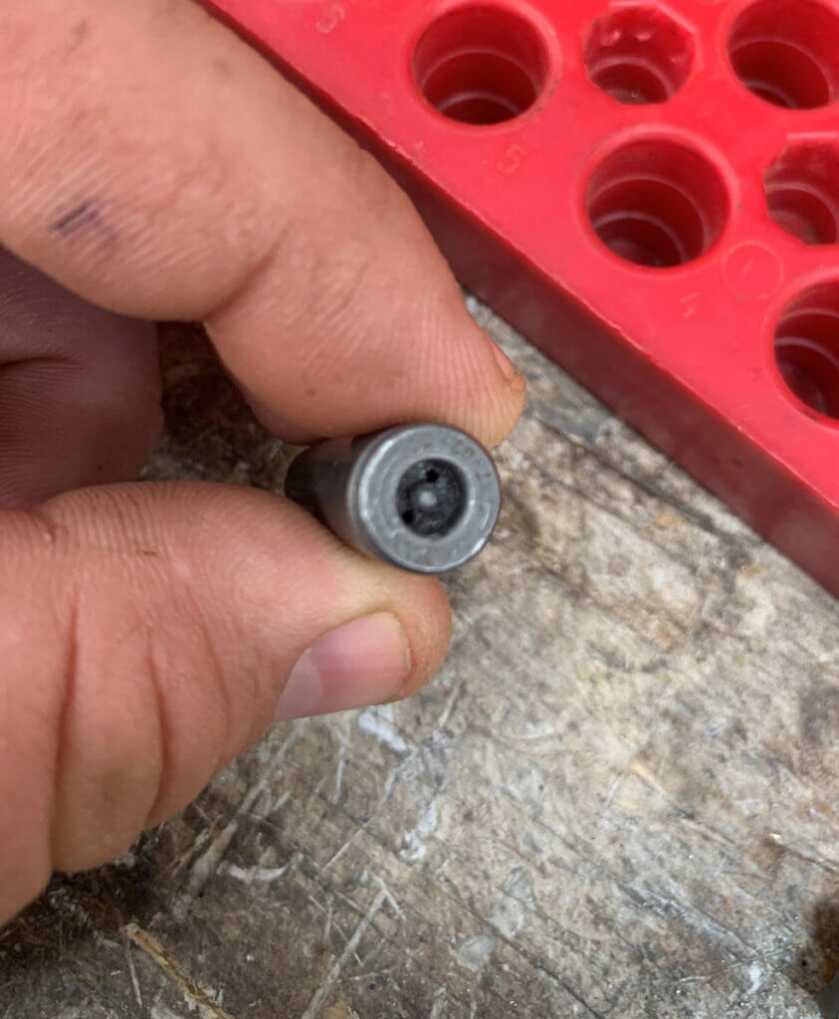
That brings us to today’s topic: Reloading Steel Cased 7.62×39. If you reload for military calibers, you’ve likely already asked about and been told two things: You can’t reload Berdan primed casings, and you can’t reload steel casings. Today, I’m going to show you that both are quite possible.
The current ammunition situation is not really that unusual an event. Recently it seems as though there is a major shortage of ammunition every few years, brought on by public concerns of one thing or another. So after weathering a few of these “storms”, I started looking for ways to load 7.62x39mm affordably so that I could keep shooting even if factory ammunition was completely unavailable for a while. As I mentioned earlier, steel casings from Russian produced 7.62x39mm ammunition are similar to .22lr casings, in that people either leave them lying on the ground or throw them away.
If you ask anyone who knows me, they’ll tell you that I really don’t like to just throw things away, especially if I can conjure up any reason at all that thing might be useful. I even tend to pick up “junk” from other people, if I think it might be useful. So I had a bucket full of 7.62×39 steel cases sitting in my reloading room, as I scratched my head trying to come up with a way to use them. Berdan primers were not available. I saw a few ideas on various online forums of ways to use boxer primers in these cases, but everything I found had one issue or another. So, I continued on working on a load for 7.62×39 with some brass cases and came up with a load using cast bullets that was quite affordable and would reliably cycle. At that point, I shelved the idea for the time being.

Fast forward a few years to present, and I decided I’d take a look for some Berdan primers for 7.62×39. I stumbled onto a source, Federal Armament (not to be confused with Federal Ammunition-which we’re all familiar with). They have 7.62×39 Berdan primers listed for sale. They only sell them in packs of 5,000, but they are pretty reasonably priced. With these now being available, I had everything I needed to reload those steel cases.

In terms of actually reloading them, there really isn’t that much difference from reloading any other rifle cartridge. The casings need to be cleaned and checked for length, just like you would when reloading brass cases. With steel cases, the main reason (beyond the obvious examples of damaged cases) to discard them is rust. I have not had very many steel casings that need trimming. Then the first thing is to deprime the spent casings. With Berdan primed casings, depriming is a separate step and requires a special tool. I found an RCBS Berdan Decapping Tool at a local shop a few years back. They’re also available from Midsouth Shooters Supply. It does require a little bit of practice to use. But once you get the hang of it, it’s pretty easy. The case goes on the rod, and the other tool has a pin and a hinge that grabs the case rim. The pin presses in the old primer and flips it out of the pocket.

With the cases deprimed, the next step is to size them. This is just like you would normally, except that the decapping pin must be removed as there is no center primer hole for it to go into. My 7.62×39 die set is made by Lee Precision. The decapping pin is part of the expander rod, so it couldn’t just be removed. I found a couple of extras at a local shop, and just ground the pin off of one. If you happen to have one that’s had the pin broken off (we all do it, eventually), it would work wonderfully for this purpose. I told you I don’t like to throw things away!
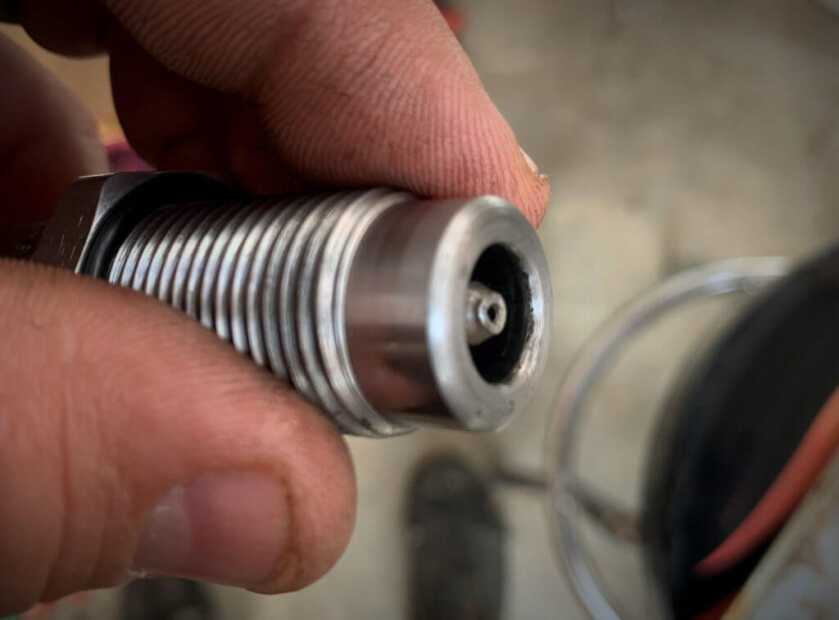
While we are on the topic of the reloading dies, one of the commonly held beliefs regarding steel cases is that they’ll wear your dies out prematurely. First, not all steels are the same. The steel used to make steel casings is pretty soft. Whereas the steel used in reloading dies is not. Second is the simple economics of this. The RGB set from Lee is $19.99. The steel cases are essentially free. I haven’t seen any commercially available brass cases for less than about $20 per 100. So you can pay for replacement dies in 100 casings, which you may not even need to do. I’d say that’s worth it.
After the cases have been sized, it’s time to prime them. Priming Berdan cases is a little bit different than priming boxer cases. The anvil is part of the case, not in the primer, so it is possible to seat them too deep. If the primer is too deep, you can end up with hang-fires or even duds. So make sure not to seat them in too far. They should be just below the surface of the case head. In the priming process, I had some primers snag the edge of the primer pocket and crumple. The primer pockets are likely crimped. If you lightly chamfer the pocket, you will avoid this problem.
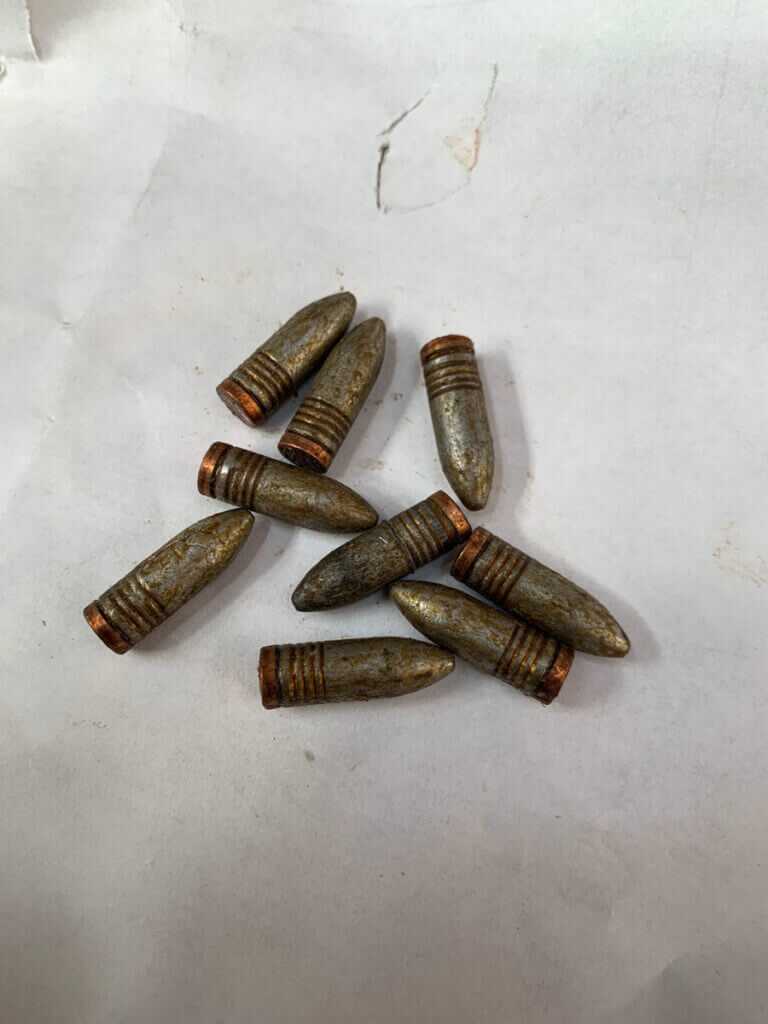
Next, you put the powder in the cases and seat the bullets. If you are so inclined, you could use steel casings for regular 7.62x39mm loads. My “cheap” load for 7.62x39mm uses a cast bullet from this Lee Mold and a gas check. I chose cast bullets for two reasons: cost, and because I make them. With a lot of reloading components being hard to get right now, I’m sure you can see the value in being able to make your own bullets. When I figured up the cost, it worked out to be about $3.00 a box including the lead for the bullets and cost of the gas checks. I’m not going to get into the finer points of bullet casting here, both for space constraints and to encourage you to do some research on the topic (it’s a whole world unto itself). Because I am using cast bullets, the case mouths need to be chamfered so they don’t chew up the bullets when seating them. I’m not sure if the steel casings would be hard on the chamfer tool I typically use on brass, so I use a countersink intended for steel just to be sure. These are only a couple of dollars and available from a variety of sources.
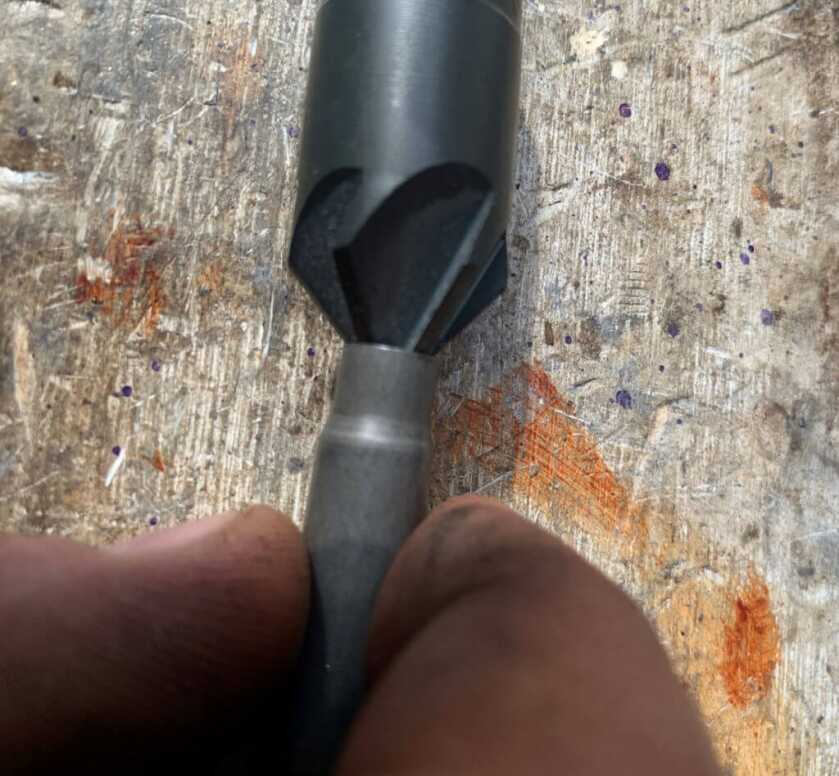
For the powder, I use 17.0 grs of IMR 4198. This load isn’t very much over the starting load. I basically just went high enough that it would reliably cycle in my rifles. Given the nature of most of the weapons in this caliber, you may find that you need to tweak this load slightly to get it to work in your particular rifle. When I checked it with a chronograph, the muzzle velocity was around 1650fps. I haven’t tried it past 100 yards, but I regard this load as more of a plinking or shorter-range load anyway. It did shoot fairly close to point of aim at 100 yards, without re-zeroing my sights from factory ammunition. You can find this load in the Lyman Cast Bullet Handbook if you’re interested in trying it. With reloading components in short supply at the moment, I should also mention that there are several other powders listed in that manual for this bullet should you not have IMR 4198.
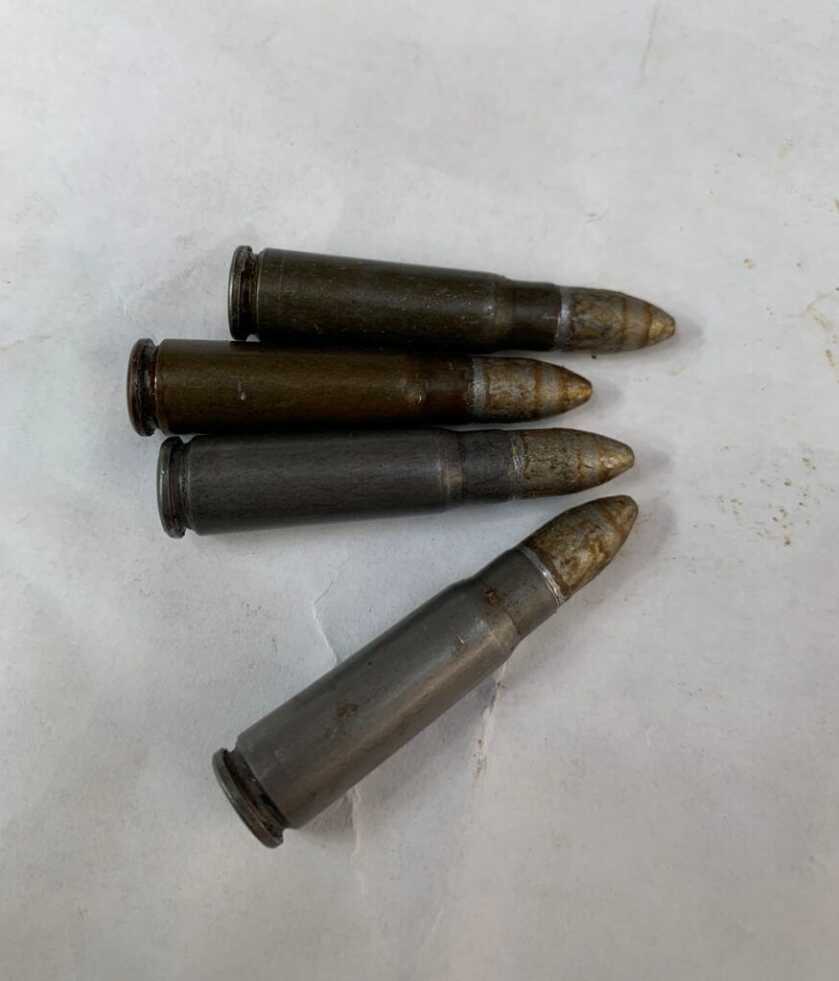
One of the remarks I got from my friends, when I told them I was playing with this idea a few years back, was “Why?” Now with most of us stuck at home for a while, and ammo in short supply, I’m not getting that response anymore. If you’re an AK shooter, it’s no big deal if you lose a few of these cases when you shoot. Chances are, there’s a bunch of them lying around anyway, so you could just pick up some more. With reloading components in short supply, this project allows you to use steel cases no one wants, and bullets you can make. When things do eventually get back to normal, (and inexpensive, steel cased, 7.62x39mm ammunition is again available) you can put this idea back on the shelf until you need it again, or you can continue to use it. Either way, save your cases in the meantime. With the way things are in the world today, it’s very possible that being able to reload Berdan primed steel cases could prove to be a very valuable skill to have.

I found this article so friggin interesting I am not a reloader currently but really really want to get into it. Only problem is due to my current living situation I have no where to do the reloading however once I do and get comfortable doing it I am def gonna have to try this
Would like to know how to reload steel cases- Thank you
Nice article. I reload brass shotshells that use berdan primers. They last a lot, cheaper than 209 primers. I use a large pointy knife and a mallet to decap them
Just put the knife tip to the side of the primer, mallet it down and pop out the spent cap
Great article, I started reloading recently and fell down the berdan rabbit hole. I use a sharp punch, and set the cases primer up in a block of wood. Then 2 whacks with a 5lb hammer and they pry right out. Just stay towards the edge as to not damage the anvil. The firing pin dent is usually off center anyways so it makes a good starting place for the punch. Way less mess than hydro and the cheapest option. I recently bought 5000 7.62×39 berdan primers for $140 shipped. To put that in perspective in todays CovidPanic 5000 Small magnum pistol/rifle primers cost me over $700. The worst part about berdan is the sizes, .223, 9mm, 7.62×39, 7.62×54… seem to ALL have different primer sizes. BUT,.. at .02 a primer in markets like this would still make having 5k each of 5 calibers worthwhile. Which brings me to the question, Shelf-life of berdan primers? They seem to just be exposed percussion powder. Any info on berdan storage and lifespan would be great. Thanks again for a good read.
I’ve been reloading aluminum cased Blazer for years. It started about 10 years ago when a blazer would slip into my clean cases and I’d reload it accidentally.
Over time, I saved up a few and decided to give shooting them a try. With a gloved hand and an empty magazine, Ifired the first one.
I inspected the case and all was fine.
So I shot the rest. All the rest were fine.
As an experiment I loaded the once reloaded cases with maximum pressure loads and then fired them from an otherwise empty gun.
The inspected cases looked fine.
From that point forward, I have just treated Blazer aluminum cases like any other case. They get tumbled and reloaded like everything else.
I started reloading .223 steel cased ammo back when .223 was scarce. Worked just fine. The steel was only slightly harder to work than brass. Seemed I could only reload about twice before the mouths would start to crack. I just use them now for places I shoot where it is difficult to retrieve the cases.
The beautiful thing about steel cased ammo is that, in spite of being nearly impossible spot on the ground at times, they are easily picked up using a large clean-up magnet like the ones contractors use to pickup dropped nails in the yard.
This is a prepper’s dream! As long as you have plenty of powder and primers, you can get almost all the other supplies for free, if you know where to scrounge!
Are berdan primers the same diameter as boxer large rifle?
don
There are different sizes of Berdan primers. The size for 7.62×39 is not the same size or close enough to work.
Berdan primers can also be removed hydraulically. Using a wooden dowel, fill the case with water, insert the dowel of appropriate size in the case mouth and give it a tap. You’ll need to place the primer over something with a hole large enough to accommodate the exiting primer. I use the de-priming base of a .308 Lee Loader kit. You may want to do it outside or in the shower until you get good at it. Good thing about the method, no special tools required.
I reload 7.5 x 55 Swiss that is Berden primed using the RCBS deprimer , but then drill a primer hole to use Boxer primers. Works great.
Any idea about how many times you can reload an individual case and in what way the case will typically fail (ie: split neck, split body, head separation, etc). Thanks.
Honestly, I don’t know. I seem to lose them before I wear them out. The load I’m using is not particularly stout, so it’s not hard on cases anyway.
Gee, thanks for giving us a Close Up Picture of these Elusive Berdan Primers
Good to know. Thanks for the info.